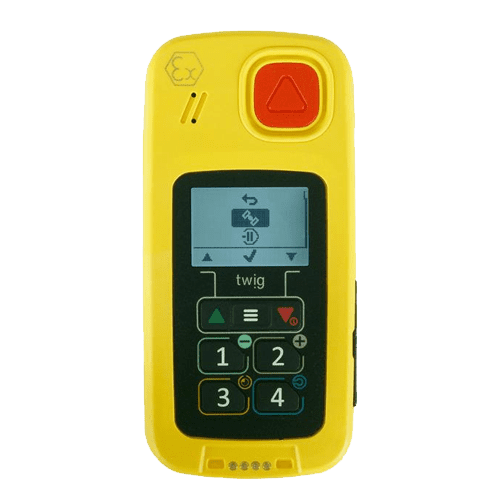What Constitutes A Workplace Hazard?
Under UK law, employers have a duty of care to ensure the health, safety and wellbeing of all employees. This means it’s an employer’s responsibility to identify the hazards facing their employees and put measures in place to mitigate these.
From construction sites to office buildings, every workplace has its own set of hazards which can pose a risk to employees. If not addressed, hazards can result in illnesses, injuries or even fatalities. So, successfully identifying and addressing these hazards is not only key to creating a healthy workplace but can also help organisations fulfil their duty of care and avoid costly health and safety penalties.
What is a workplace hazard?
Anything that has the potential to threaten the health, safety or wellbeing of an employee is considered a workplace hazard. These can exist in various forms, including physical, chemical, biological, ergonomic, and psychological.
It’s relatively common for employees to be unaware of the hazards that they face on a daily basis. Those who haven’t encountered an accident at work before often feel like they aren’t at risk, normally because they have been doing the job for a long period of time.
What is the difference between a hazard and a risk?
While the terms “hazard” and “risk” are often used interchangeably, it’s important to understand that they have different meanings:
Hazard – A hazard refers to a potential source of harm, damage, injury, illness, or other adverse effect. For example, a hazardous chemical or a slippery floor can be considered a hazard.
Risk – Risk is the likelihood or probability that an individual or a group will experience an adverse effect as a result of a hazard. It considers the potential consequence or severity of the harm that could occur. Risk depends not only on the presence of a hazard but also on factors such as the level of exposure, the vulnerability of individuals, and the effectiveness of control measures in place.
This means that hazards exist regardless of whether they pose an immediate risk, but the level of risk associated with a hazard can be controlled.
Types of hazard
It’s important to create a workplace health and safety culture where hazards are taken seriously. Splitting hazards into categories can be beneficial; not only will it help employees understand the hazards faced within their role, but it also provides employers with an understanding of what safety procedures should be implemented.
Workplace hazards tend to fall into the following six categories and by understanding these, you’ll be better equipped to identify hazards within your workplace.
1. Physical hazards
Physical hazards affect those working in extreme conditions or environments. Examples of physical hazards include moving machinery parts that can cause injuries, excessive noise levels that can lead to hearing loss, and extreme temperatures that can result in illnesses. Additionally, radiation, falls from heights, and falling objects are significant physical hazards found in industries such as construction and manufacturing.
These hazards can be controlled by conducting thorough risk assessments, implementing PPE and delivering employee training.
2. Safety hazards
Safety hazards relate to the safety procedures in place and can arise from various factors, such as unsafe working conditions, inadequate safety protocols, and improper use of equipment or machinery. Examples of safety hazards include slippery floors, lack of proper signage, unguarded machinery, electrical hazards, and inadequate emergency exits.
Safety hazards can result in accidents, injuries, and even fatalities if not addressed promptly. It is crucial for employers to prioritise safety measures, including proper training, the implementation of safety protocols, and the provision of personal protective equipment (PPE) to reduce safety hazards.
3. Chemical hazards
Chemical hazards in the workplace refer to substances that can cause harm or adverse health effects, such as dangerous chemicals, radioactive materials and toxic gases. These are most present in industries such as manufacturing, construction, cleaning and healthcare.
Chemical hazards are particularly dangerous as exposure can occur through inhalation, as well as skin contact, ingestion, or accidental spills. The risks vary depending on the type and concentration of the chemical, ranging from irritation and burns to long term health consequences or death. Appropriate training, signage, storage and building maintenance can help to reduce the threat to workers. It is also essential for staff to be aware of and provided with the correct PPE and ventilation.
4. Ergonomic hazards
Ergonomic hazards in the workplace are factors that can lead to discomfort, strain, or injury. These are often caused by excess strain on the body, such as from poorly designed workstations, repetitive motions or manual handling. Employees that work long hours without breaks can also experience fatigue.
These hazards may not be noticeable at first, but prolonged exposure can result in musculoskeletal disorders (MSDs), such as back pain, tendonitis, carpal tunnel syndrome, and neck and shoulder strains. These hazards can be prevented by enforcing regular breaks and implementing a positive safety culture to boost morale and team spirit. Employees should also be offered ergonomic equipment if needed, such as ergonomic chairs, footrests, computer screens or keyboards.
5. Biological hazards
These hazards originate from living organisms or their byproducts, including bacteria, viruses, fungi, parasites, and toxins. This means they are most often present in settings such as healthcare, laboratories, and agricultural environments. In the healthcare sector, for example, workers are exposed to dangers such as diseases, viruses and medical waste, which can have a very detrimental effect on their overall health and wellbeing. Employees who work with animals can also be directly exposed to the threat of being bitten or stung, which can pass on dangerous substances.
These hazards can be controlled by implementing proper cleaning procedures and correctly storing and disposing of hazardous materials. Additionally, the use of PPE, such as gloves, masks, and protective clothing, can provide an additional layer of defence against these hazards.
6. Psychological hazards
People often associate workplace hazards solely with physical obstacles. Those working with the public – including retail staff and community-based workers visiting people’s homes – face the risk of finding themselves in difficult situations. Certain employees such as charity and social workers often deal with vulnerable individuals, who, therefore, face the risk of encountering threatening, challenging behaviour.
These psychological hazards can lead to increased stress, anxiety, and emotional strain, affecting both the mental health and job satisfaction of employees. To address these hazards, employers should implement training on conflict resolution and dynamic risk assessments to give employees the skills needed to manage difficult situations.
Addressing workplace hazards
Addressing workplace hazards is a critical aspect of ensuring the health, safety, and wellbeing of employees. By addressing them effectively, organisations can prevent accidents and injuries, promote a culture of safety and improve staff morale.
Conduct a risk assessment
Conducting a comprehensive risk assessment is the first step in effectively addressing workplace hazards. A risk assessment involves identifying and evaluating the risks present within the work environment. This allows employers to gain a clear understanding of the hazards present, their potential consequences, and the likelihood of those hazards causing harm.
By involving employees in the assessment process, you can gain valuable insights and different perspectives to ensure no hazards are missed. It can also be useful to review accident logs to see what incidents have previously occurred. Regularly reviewing and updating risk assessments ensures that risks are continuously monitored, new hazards are identified, and mitigation strategies remain effective.
Implement control measures
A risk assessment provides the foundation for implementing appropriate control measures and safety protocols, so once your risk assessment has been conducted, you can start to implement safety procedures to reduce the identified risks.
These measures can include controls, such as installing safety guards on machinery, implementing proper ventilation systems, or providing employees with a personal safety solution. These procedures should also be regularly reviewed to ensure their effectiveness.
Deliver training
Employees should be equipped with the necessary knowledge and skills to recognise and respond to potential hazards, as well as how to use the new control measures you have put in place. To ensure this, training should be implemented on topics such as identifying hazards, proper use of equipment and machinery, emergency procedures, and the importance of following safety protocols.
By educating employees about potential risks and providing guidance on safe work practices, your staff will be able to handle potential hazards and keep themselves safe. Regular refresher training sessions should also be offered to reinforce safety awareness and update employees on any changes or updates.
Provide personal safety technology
In addition to other control measures, personal safety devices can be a valuable step in enhancing employee safety in the workplace. While other measures may help to prevent an incident, personal safety technology offers vital support in the event that an incident does occur.
Peoplesafe personal safety devices and personal safety app collection allow users to raise an SOS alarm directly to our dedicated Alarm Receiving Centre (ARC) in the event of an emergency. Here, our expertly trained Alarm Controllers will closely monitor the call and take appropriate actions, including following escalation procedures and bypassing 999 to get an emergency response in the fastest possible time. Additional features such as timed activities, fall detection and voice memos allow users to customise the service to meet their specific needs.
When selecting which personal safety solution to implement, it is crucial to consider the specific needs and hazards within the work environment. For example, those who face chemical hazards may be best equipped with an intrinsically safe device, whereas someone working remotely may be best equipped with a device that utilises satellite technology.
By implementing personal safety technology such as panic buttons and alarms, employers can demonstrate a commitment to employee wellbeing and can significantly enhance their sense of safety while working in potentially hazardous situations.








